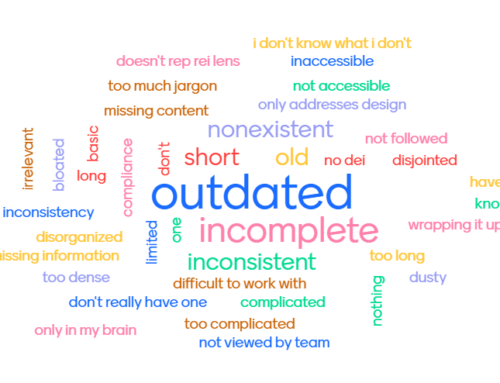Nancy Schwartz at Getting Attention wrote yesterday on the value of graphic designers who can write well too, quoting an article by Derek Powazek. While I think it’s incredibly difficult to be both an outstanding writer and an outstanding designer, it is reasonable to expect design professionals to have solid writing skills, and vice versa. This is an especially important consideration for nonprofits that may not have the resources to hire both professional writers and designers, which is obviously the best approach.
What Designers Should Be Able To Do – And What They Should Never Do
I especially appreciate the designer who can proofread, because the design process itself often introduces mistakes in the text. Designers can insert typos when they key in small sections of text themselves, like folios. Sometimes text boxes aren’t pulled down all the way, leaving blocks of text hidden. Applying new fonts to blocks of text can sometimes produce odd characters that don’t belong. While I don’t expect a designer to read the text word for word, I do expect them to watch for text mistakes like these that are generated at their desks. I’m also grateful when they spot typos that I overlooked and bring them to my attention.
I am not pleased, however, when a designer takes it upon himself or herself to make corrections that are questions of style. This is where a little knowledge can be dangerous. For example, a designer I once worked with decided that certain words needed to be capitalized and took it upon himself to make those changes. I had to waste several hours of my time going back over the document to identify all the places where he needed to change the words back to lower case. Needless to say, that was the last time we worked together.
What Writers Should Be Able To Do
At the same time, I think writers should also understand some design basics. Understanding how a document will look can have a huge impact on the text. For example, how I organize text, how many words I use per section, and the number of headings and subheadings I’ll use will vary significantly if I’m writing a tri-fold brochure versus a two-page flyer. The overall size of the document is the same, but the design is completely different.
Clients often won’t know how many words they need for an annual report, but they’ll know they want the whole document to be 12 pages, for example. I know enough about annual report design to calculate how much room will be required for various elements of the report and to estimate a word count for the text I need to write. If I can talk to the designer about their thoughts for the piece, my estimate will be that much better.
Ultimately, designers should respect writers, writers should respect designers, and nonprofit clients should respect the skills of both.
P.S. Designers and other “non-writers” who want to improve their writing skills should consider my two “Writing for the Real World” e-courses — Making Your Writing Correct and Making Your Writing Clear and Concise. Sessions start the first Monday of each month.






